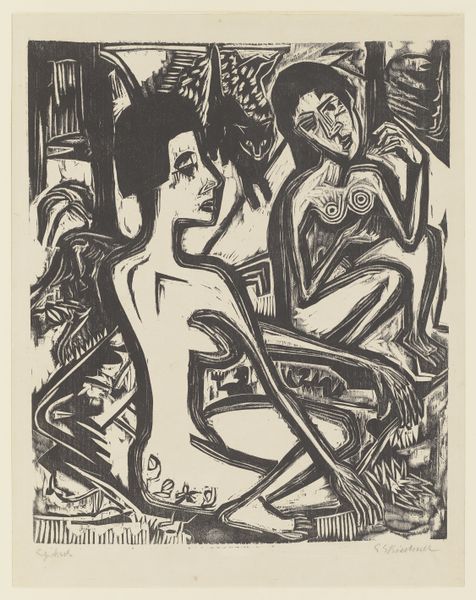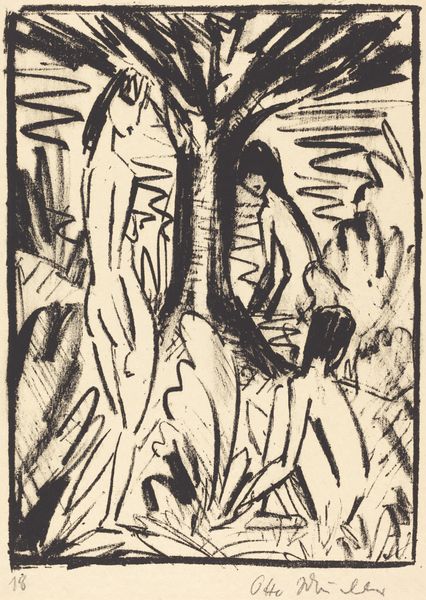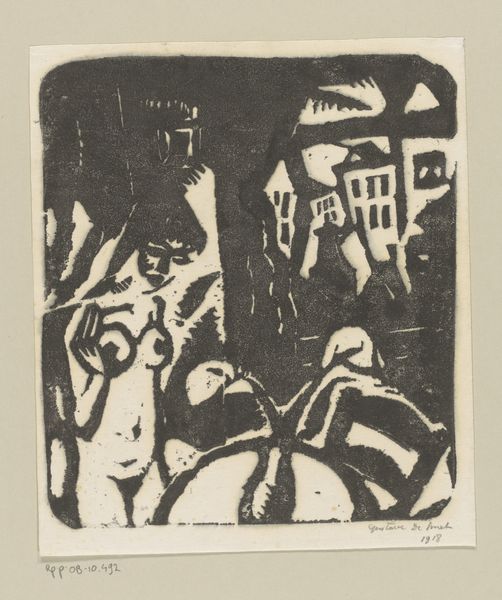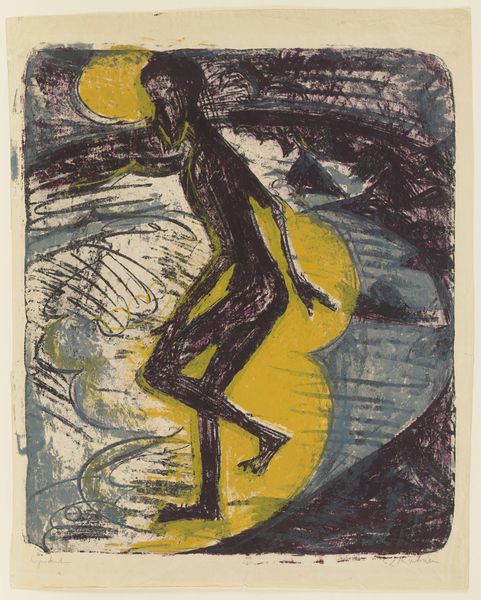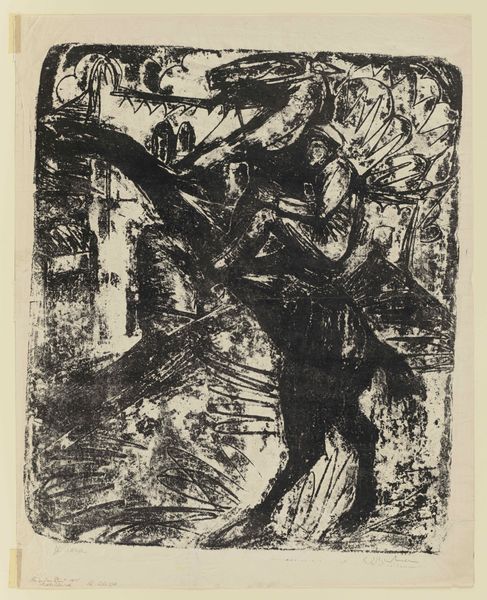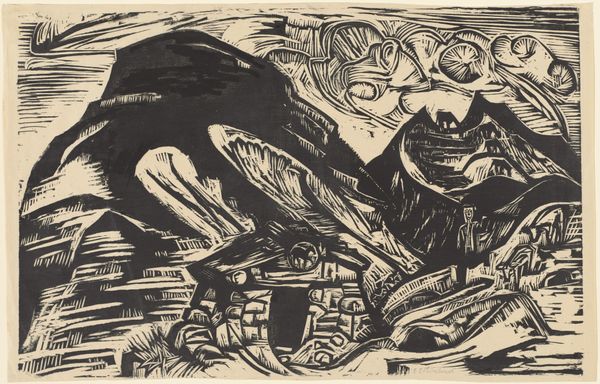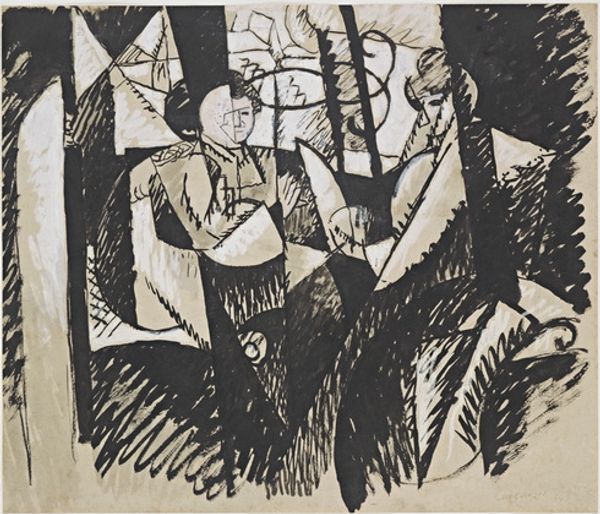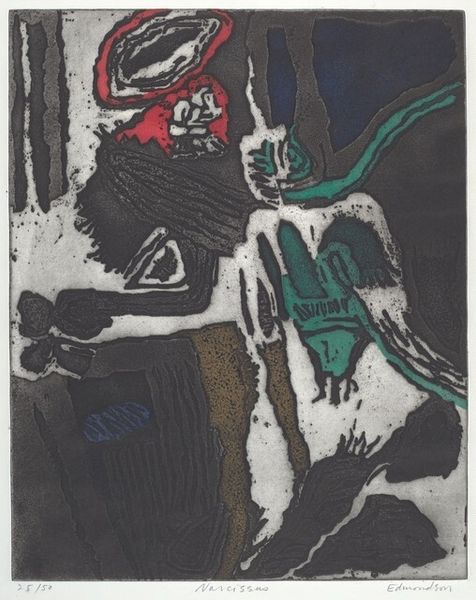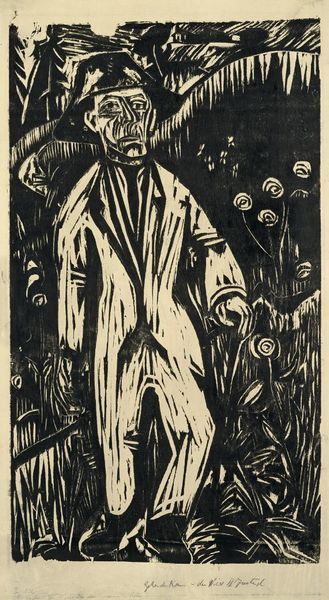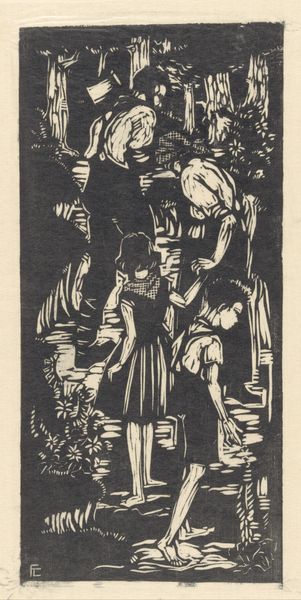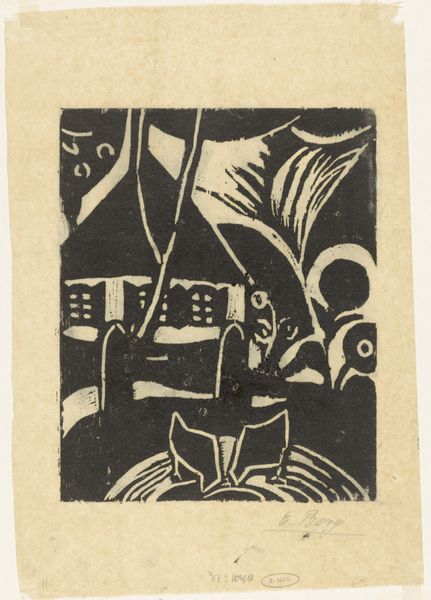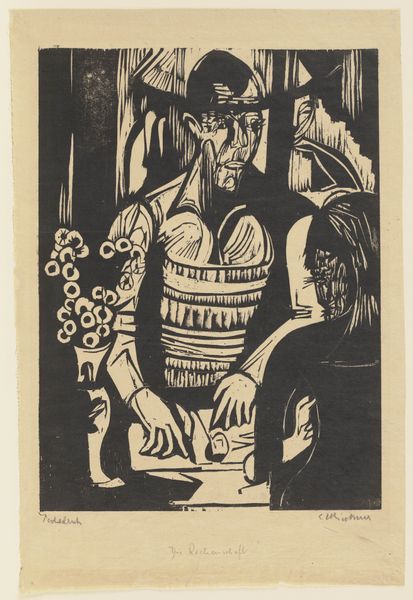
woodcut
#
landscape
#
figuration
#
woodcut
#
symbolism
#
post-impressionism
Dimensions: sheet: 5 15/16 x 4 5/8 in. (15.1 x 11.7 cm)
Copyright: Public Domain
Curator: Here we have Paul Gauguin's "Fragrance (Noa Noa), small block" created between 1894 and 1895. It’s a woodcut currently held at the Metropolitan Museum of Art. Editor: This small woodcut emanates an atmosphere of deep solitude. The composition, with its heavy blacks and stark contrasts, initially feels somewhat confining, almost claustrophobic. Curator: Yes, the dramatic use of chiaroscuro immediately draws the eye, doesn't it? Gauguin is using the woodcut medium to its fullest potential, playing with textures and patterns. Notice how the density of lines varies to create different effects, some are suggestive of light while others, pure opacity. Editor: Those varying line weights also serve to create distinct areas of focus and recession. There is, undeniably, an aesthetic intentionality that contributes significantly to the work. But what are the historical implications behind this visual tension, particularly within the colonial gaze Gauguin employed when in Tahiti? How does this work contribute to the romanticized and fetishized vision of Polynesian people? Curator: That’s a crucial layer to consider. Gauguin was deliberately rejecting Western artistic conventions, wasn't he? He uses symbolism through these forms, colors and the simplified representation of Tahitian life. Look at the simplified figuration, the stylized depiction of flora—elements through which Gauguin sought to convey a sense of the exotic, of a culture untouched by modernity. Editor: This desire for the "untouched" has deep roots in the violence of colonialism. Gauguin's art is inseparable from the political context of late 19th century France. We must examine how it helped construct and perpetuate colonial power structures. Gauguin uses this piece, “Fragrance”, to present this idea of this world. Curator: I can see your argument; I would suggest also recognizing his attempts at simplification in representing light, texture, and form as his own artistic experiment. He's moving towards abstraction here. The flatness is less about direct representation, perhaps, and more about distilling the essence of a place. Editor: Yes, Gauguin successfully creates something both beautiful and undeniably complicated. Looking deeper, one sees how the visual language simultaneously celebrates and distorts Tahitian culture. His artistic intentions—bold as they may have been—cannot absolve him from the problematic realities that surround colonialism and exotification. Curator: An incisive analysis. As we conclude, consider both the captivating aesthetic qualities of "Fragrance," as well as the intricate issues surrounding its creation and legacy. Editor: Indeed, let's grapple with the visual and political tensions within the piece to encourage future engagement.
Comments
No comments
Be the first to comment and join the conversation on the ultimate creative platform.

